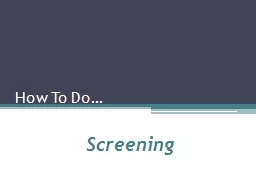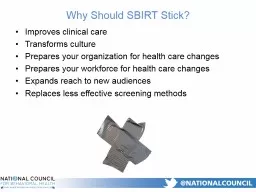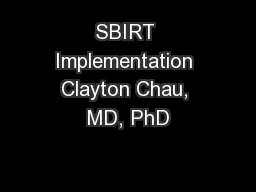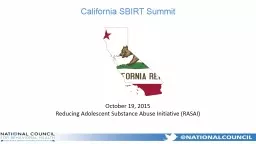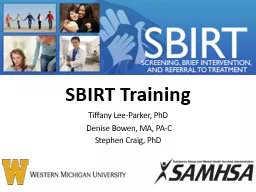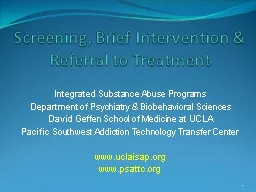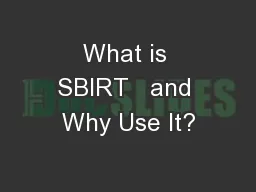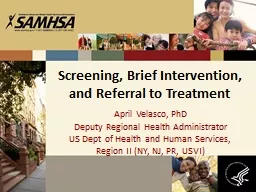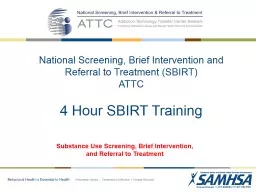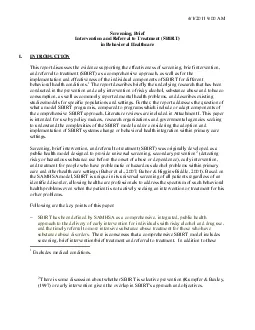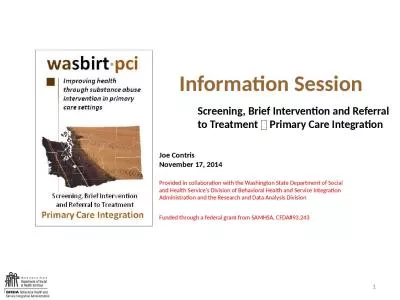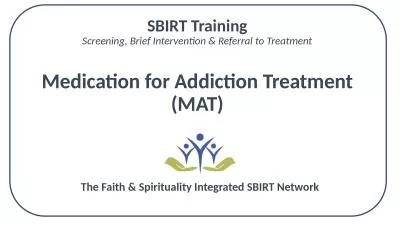PPT-How To Do… Screening Screening: Why do SBIRT?
Author : pasty-toler | Published Date : 2018-11-01
Who are the addicts Screening Why screen universally Drinking and drug use are common often go undetected can increase risks to safety and health problems Routine
Presentation Embed Code
Download Presentation
Download Presentation The PPT/PDF document "How To Do… Screening Screening: Why do..." is the property of its rightful owner. Permission is granted to download and print the materials on this website for personal, non-commercial use only, and to display it on your personal computer provided you do not modify the materials and that you retain all copyright notices contained in the materials. By downloading content from our website, you accept the terms of this agreement.
How To Do… Screening Screening: Why do SBIRT?: Transcript
Download Rules Of Document
"How To Do… Screening Screening: Why do SBIRT?"The content belongs to its owner. You may download and print it for personal use, without modification, and keep all copyright notices. By downloading, you agree to these terms.
Related Documents

